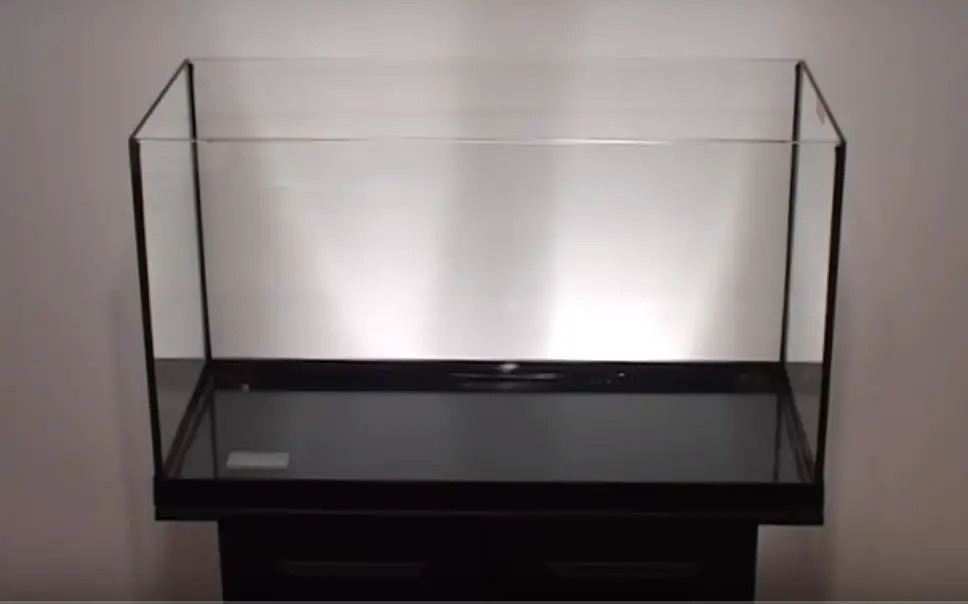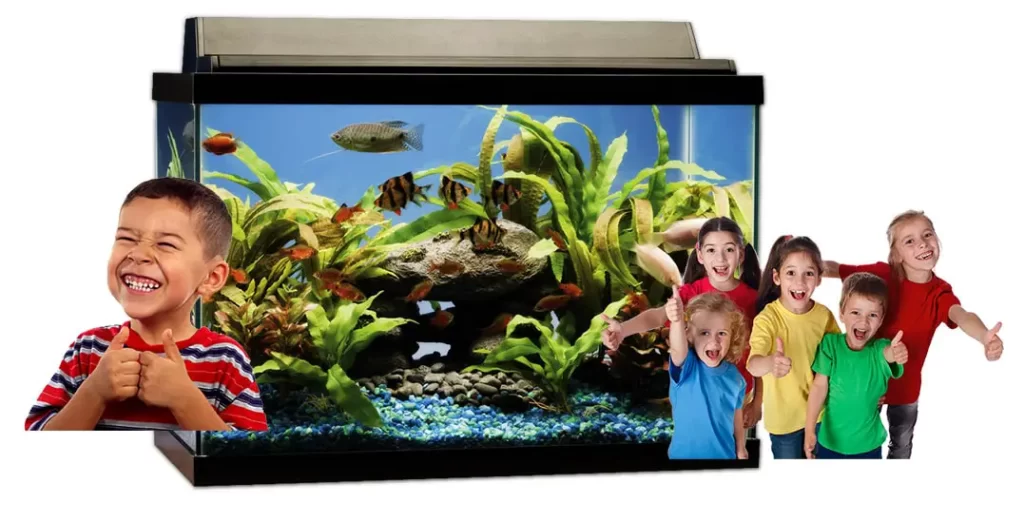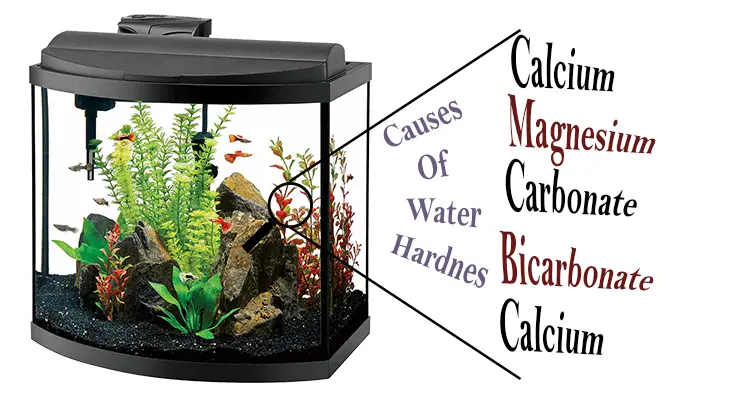Water is an essential element of the earth. Water lies beyond the land, in the sea and oceans, and even in the air as moisture. It is indeed joyous if you admire and love nature and it’s beings so much, yet you aren’t always able to make time for it. Well, fear not, because you can do so with a little bit of space called an Aquarium! Today we will break down this complex idea of choosing the aquarium for you as watching your livestock can be a stress reliever. More importantly, we will be talking about aquarium size and weight.
An aquarium, besides being a boxed enclosure of visible material, is a vivarium display of flora as well as fauna. An aquarium comes in many sizes and shapes from small to large to custom sizes and shapes. With that, a major impact occurs on the weight. The most important factor you need to consider is the size and the weight of an aquarium when you plan to have a species. The idea of having an aquarium might be simple. However, it’s the math that you need to consider. An aquarium can be made up of either acrylic or glass.
So, to enclose the delicacy of nature in a nutshell, you need an aquarium. Today, we will be discussing the factors of size and weight in any aquarium and their importance.
How Aquarium Size and Weight are Interrelated?
It is obvious that a tank, when filled with water, will weigh much more than when it is empty. Therefore the size and weight relation is an important factor. In addition, glass aquariums are heavier than acrylic aquariums.
The size and weight of a tank are directly proportional to each other. The bigger the size, the more the tank will be heavier. An aquarium of 15 gallons will weigh more than 200 hundred pounds. The reason why you should be concerned about this is to gain an estimate of the tank weight in order for placement.
A gallon of freshwater weighs 8.34lbs on average based on U.S. units. A gallon of freshwater weighs 8.34lbs times the gravity 1.025, which is 8.43 x 1.025 = 8.5485 lbs. This means gravity also affects the weight of the tank.
The size also refers to the thickness of a glass aquarium. The dimensions of the tank material will drastically affect the weight.
Categorizing Tank Sizes
Aquariums come in different sizes, and they can be classified majorly on the basis of the gallon capacity. We have divided it according to surface area for a better understanding. Aquariums can be custom made as well according to the need of the person.
Sometimes a ready-made aquarium can be cheaper, and sometimes the custom ones can be cheaper based on your requirements. Here, we will majorly be discussing the gallon capacity, cost, when to use(beginner-advanced), and which tank has a better maintenance chance.
According to the gallon capacity, there are three categories, namely small, medium, and large. One thing to understand here is that different countries may use a different volume unit. Therefore the tank capacities can differ accordingly. Here, the information is based on U.S. units where a gallon of water weighs 8.34 pounds( at a specific gravity of 1.000).
Small
An aquarium can be categorized as small if it is between the capacity from 2.5- 15 gallons.
This aquarium is to be used, especially by the practitioners. The idea of a beginner having a small tank is not ideal since smaller tanks are actually harder to maintain than larger ones.
A small aquarium can cost anywhere from $100- $300, depending on the quality and brand.
| Small Aquariums | |||
| Tank Size | L x W x H | Empty Weight | Filled Weight |
| 2.5-gallon | 12″ x 6″ x 8″ | 3 lbs. | 27 lbs. |
| 5-gallon | 16″ x 8″ x 10″ | 7 lbs. | 62 lbs. |
| 10-gallon (leader) | 20″ x 10″ x 12″ | 11 lbs. | 111 lbs. |
| 15-gallon | 24″ x 12″ x 12″ | 21 lbs. | 170 lbs. |
| 15-gallon (high) | 20″ x 10″ x 18″ | 22 lbs. | 170 lbs. |
Table 1: Standard sizes and weights of aquariums up to 15 gallons
Medium
An aquarium can be categorized as small if it is between the capacity from 20- 40 gallons.
This tank size is the most suitable and has stable volume enough to tank at most four different shoaling species according to their sizes. Medium tanks are the ideal beginner recommended size. This is because maintaining these tanks are quite easy on an average for a beginner.
A medium aquarium can cost anywhere from $400- $1600.
| Medium Aquariums | |||
| Tank Size | L x W x H | Empty Weight | Filled Weight |
| 20-gallon (high) | 24″ x 12″ x 16″ | 25 lbs. | 225 lbs. |
| 20-gallon (long) | 30″ x 12″ x 12″ | 25 lbs. | 225 lbs. |
| 25-gallon | 24″ x 12″ x 20″ | 32 lbs. | 282 lbs. |
| 29-gallon | 30″ x 12″ x 18″ | 40 lbs. | 330 lbs. |
| 30-gallon (breeder) | 36″ x 18″ x 12″ | 48 lbs. | 348 lbs. |
| 40-gallon (breeder) | 36″ x 18″ x 16″ | 58 lbs. | 458 lbs. |
| 40-gallon (long) | 48″ x 12″ x 16″ | 55 lbs. | 455 lbs. |
Table 2: Standard sizes and weight from 20 to 40-gallon capacity
Large
An aquarium can be categorized as large if it is between the capacity from 50-180 gallons.
Large aquariums are capable of holding larger livestock. Larger tanks are recommended for those who want to have a diverse aquarium. Large tanks are quite harder to maintain, which means one needs to put in an effort and time. This also means that the tank keeper should always remain alert and aware of the tank and its weight. This is because of the larger the tank, the more the weight, and the more the chance of breakage.
A large aquarium can cost anywhere from $2000- $5000 to 180 gallons.
| Large Aquariums | |||
| Tank Size | L x W x H | Empty Weight | Filled Weight |
| 50-gallon | 36″ x 18″ x 19″ | 100 lbs. | 600 lbs. |
| 55-gallon | 48″ x 13″ x 21″ | 78 lbs. | 625 lbs. |
| 65-gallon | 36″ x 18″ x 24″ | 126 lbs. | 772 lbs. |
| 75 gallon | 48″ x 18″ x 21″ | 140 lbs. | 850 lbs. |
| 90-gallon | 48″ x 18″ x 24″ | 160 lbs. | 1050 lbs. |
| 125-gallon | 72″ x 18″ x 21″ | 206 lbs. | 1400 lbs. |
| 150-gallon | 72″ x 18″ x 28″ | 308 lbs. | 1800 lbs. |
| 180-gallon | 72″ x 24″ x 25″ | 338 lbs. | 2100 lbs. |
Table 3: Standard sizes and weight from 50 gallons and larger sizes
Aquarium Size According to the Surface Area
According to the surface area, an aquarium comes in three basic types:
Regular Aquarium
Regular tanks are standard tanks with a good surface area. These tanks are capable of housing any type of fish as well as plants.
Show Aquarium
Show tanks are narrow tanks that are designed for the display of the tank containment. They are taller in comparison to the regular ones and provide a much smaller surface area to work with. Show tanks are good for certain housing fish like angelfish, reef butterflyfish, etc.
Long Aquarium
As the name suggests, a long tank is a tank with an elongated length. Long tanks are said to have a larger surface area. These tanks are beautiful to look at as they are good for housing Schooling and territorial species like Guppies, Tetras, Rasobars, etc.
Besides these tanks, there are tanks such as round tanks, hexagonal tanks, and a popular tank called nano tanks.
Bonus Tip:
Choose an aquarium with more surface area for fish as this enables the fish to have more space. If you choose an aquarium with less surface area, you need to be careful while stocking up.
A hexagon tank is more of a display tank with less surface area. They are capable of housing any organisms; however, cleaning them is a bigger hassle.
The idea of a round tank comes from the goldfish bowls that you win at carnivals. Round tanks, also known as bubble tanks are circular shaped small tanks. The round tanks most supposedly aren’t suitable for housing fish. A major drawback is that they have quite a less surface area when full.
Nano aquariums are a recently popular aquarium type. They are useful for housing planted tanks as well as nano invertebrates like shrimps, snails, and even lobsters. These tanks have a limited capacity and surface area. As a result, they are quite difficult to maintain.
Factors of Weight
According to Newton’s law, the more the gravity, the more the weight, i.e., they are proportional. This is the same for the aquarium. The weight of the aquarium will differ when filled with water. This is not the only factor that will affect the weight of an aquarium. There are factors like substrate, decorations, equipment as well as fish size that all affect the weight. Why you need to be concerned with this is so that your well-maintained aquarium has less probability of breakage or cracking. The idea of weight increment or decrement is as follows:
Due to Type of Water
There are basically two types of fish tank set up. This is either freshwater or saltwater. You might not know, but yes, the weight of freshwater and saltwater is actually different.
Saltwater aquarium weighs more than the freshwater aquariums, the reason being saltwater has salt dissolved in it. Dissolving salt in water increases the density of water, i.e., mass per unit of volume increases.
This is related to the science term ‘buoyancy.’ Simply understanding, if an item of a constant weight is put into saltwater, it is buoyed up by more force than in freshwater. A US liquid gallon of freshwater weighs around 8.34 pounds (lb) at room temperature. The saltwater will weigh 8.34 times the amount of salt you add. The amount will depend on the type of salt and the prescription amount.
Due to Equipment
An aquarium will consist of certain equipment, if not all. Basic equipment including a filter, heater, thermometers which go inside the tank. Besides these, other equipment for any aquarium is present in the article on the ‘Freshwater aquarium equipment checklist.’
A filter along with its filter media, the internal or external filter as well as temperature regulators like the thermometer and heaters will increase the weight of your tank by at least a few pounds.
Livestock Size and Number
The weight is directly dependent on the factor of what stock you keep. Be it fish or invertebrates or plants, the more the number, the more the weight.
Due to Secor
We believe an aquarium is an intelligently crafted space. The decor can include items like a centerpiece, leaves, etc. If your centerpiece is made up of stone, then it will take up some weight.
Due to aquarium material
Acrylic glass is lighter in terms of weight than the glass made aquarium. In addition, an acrylic aquarium will require additional support on its edges.
The Solution to the Weight of the aquarium
The thought of an aquarium comes with support for it, given by a stand. The smaller the aquarium, the lesser the weight and vice versa.
Smaller tanks will not require much support, and you can place them almost anywhere, whereas stands are a must for larger tanks. If you plan to have a watered aquarium with a 15+ gallon capacity, you will require a stand rather than a shelf or desk. Stands, in particular, can be made up of three materials as:
- MDF/Particle Board
- Plywood
- Metal
Stands made from particleboard and MDF are weaker in nature and applicable for freshwater aquariums.
The Plywood setup is the standard material that can be used for any aquarium. They are comparatively expensive than the particleboard stands.
For structural support, metal stands are used. Since larger tanks have more weight, they require sturdy support.
Besides this, a custom DIY stand can be made out of the mix of both metals and ply.
7 Things to know before buying an aquarium: The Placement, Idea, and Concept
It’s been finalized that you want an aquarium. Before buying an aquarium, here is a small guide on what things you should consider beforehand.
Type of livestock
A lot of the time, people buy an aquarium first and then think about what to stock in it. This is the wrong approach. The first thing you need to be sure of is what stock you want and then finally search for the aquarium type and size.
Size of the aquarium
Find the size of the aquarium based on the type of stock you want to have. You can also find online calculators for this purpose.
Placement of the aquarium considering the weight
The height you want to place your aquarium will affect the weight because of gravity. You need to make sure that there is enough room between the walls and the tank such that accessories, hoses, and electric lines fit in.
Equipment
This includes items you will require for the livelihood of your stock.
Decor including the substrate
A plain aquarium is not exactly the ideal way of the stocking. Once you have an aquarium, you will eventually have to put in decorations, the substrate (if any), and lightings.
Emergency situation control
In certain cases, your aquarium might break due to certain reasons. For this, you need to have a backup. Consider careful planning and try not to have overhanging shelves nearby.
Medications, food, and fertilizers
These are the things to have proper having livestock with the prescription of a professional.
Conclusion
There are many things to take into consideration for having an aquarium, especially the size, and the weight. Because having a clear concept is important before making such a significant investment.
We hope this article has answered most of your questions and cleared the concept of an aquarium; it’s size and weight.






